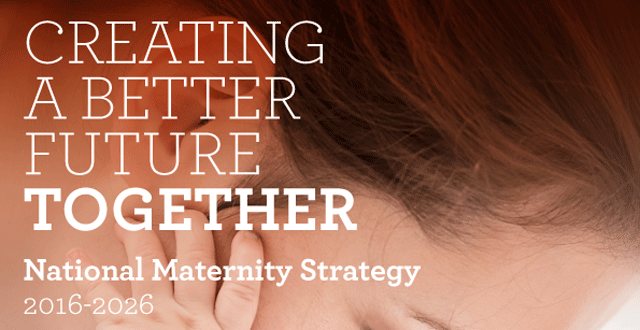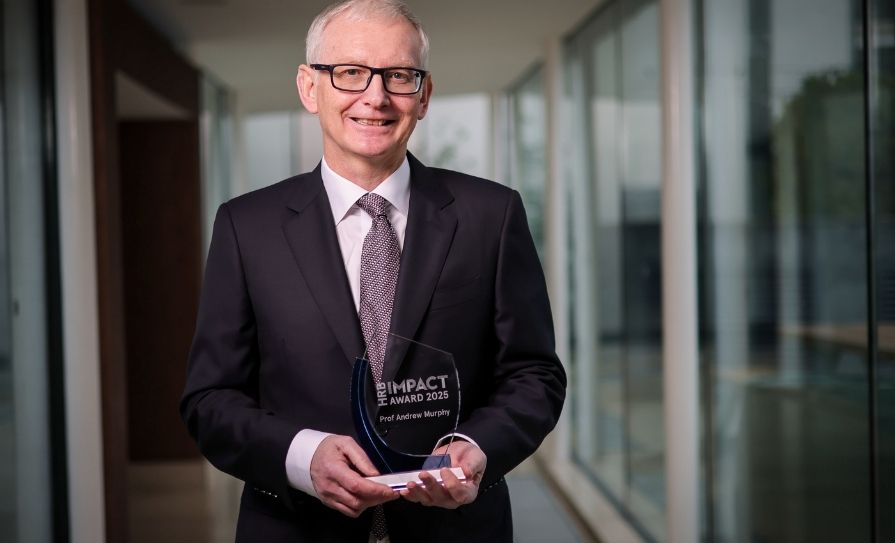Following a number of scandals involving failings in maternity services in Ireland, it was a truly momentous occasion when the National Maternity Strategy was published in 2016.
Here, for the first time ever, was a roadmap for Irish maternity services .
Amidst fears around strategy resourcing and implementation, there was hope among the public and maternity staff that the strategy would result in the improved services they had called for over many years.
It is now over two-and-a-half years since the strategy was published and it is fair to say progress has been slow.
For instance, the HSE National Women and Infants’ Health Programme (NWIHP), responsible for the implementation of the strategy, only got off the ground a year after the strategy was published.
A few months later, Dr Peter McKenna, Consultant Obstetrician and former Master of the Rotunda Hospital, was appointed Clinical Director of the NWIHP.
Delays continued and the implementation plan for the strategy failed to appear until October 2017, nearly two years after the strategy was published. The plan was originally due to be set out six months after publication of the strategy.
At the time, a number of senior clinicians working in Irish maternity services criticised the lack of progress on strategy implementation.
<h3 class=”subheadMIstyles”>Developments</h3>
Today, much of these sentiments remain among maternity service staff as the NWIHP continues its mammoth task implementing 77 recommendations and 237 actions set out in the implementation plan.
According to a spokesperson for the HSE, these actions will be implemented over various periods of time and the status of some actions will be classified as “ongoing” over the lifespan of the NWIHP.
In 2017 some 13 actions were completed, the spokesperson said.
“By the end 2018, it is anticipated that 118 actions will be completed/ongoing,” they added.
The figures sound promising. It is important to note, however, that a number of “actions” were not given specific start and end dates when the implementation plan was published – making it difficult to determine when some changes will actually occur.
Some clinicians feel there has been no appreciable change in the delivery of models of care or new care pathways and no obvious plans around birth centres.
The implementation plan points to possible changes in the Maternity and Infant Care Scheme to reflect the model of care outlined in the strategy.
This model, according to the HSE, is about providing women with informed choice regarding the care pathway they choose for their pregnancy.
A review of the scheme by the NWIHP was due to be completed in June and engagement with the ICGP on any proposed changes to the scheme are to conclude by the end of the year, the plan states.
“Any review of the Maternity and Infant Care Scheme considers the feasibility of extending coverage to include a preconception consultation and postnatal check at three-to-four months and/or additional postnatal GP visits where further pregnancy-related needs have been identified,” according to the implementation plan.
<h3 class=”subheadMIstyles”>Money</h3>
Additional funding for implementation has been distributed across maternity hospitals amid criticism the amount received is a fraction of what is required to complete the job at hand.
In 2018 the NWHIP received €4.55 million. Some €400,000 went to benign gynaecology, specifically allocated to the South/South West Hospital Group, for the development of services.
The remainder (€4.15 million) was directed at implementing the strategy, according to the HSE.
It sounds like a lot of money and it is. But the NWIHP sought about €19 million in funding for 2018.
“The full year effect of the 2018 development funding is approximately €12 million.The 2019 allocation is dependent on the budget in October 2018,” a HSE spokesperson said.
Over 2015 and 2016, cumulative funding of approximately €12 million was invested in the maternity services.
This funding supports 100 additional midwives, as recommended by the Birth Rate Plus report (a workforce methodology for determining clinical midwifery staffing) and 15 bereavement counsellors, the HSE said.
The funding is also for additional consultant obstetricians, neonatologists, a perinatal pathologist and perinatal psychiatrist “to enable the establishment of the managed clinical network between the Coombe Women and Infants’ University Hospital and Portlaoise Hospital, within the Dublin Midlands Hospital Group”.
The funding also supports the implementation of the Maternity and Newborn Clinical Management System.
<h3 class=”subheadMIstyles”>Anomaly scanning</h3>
Deficits in anomaly scanning services provided to women nationally are well documented. The issue is a “priority area” for the NWIHP and it recognises the “inequitable situation that has existed across our 19 maternity hospitals/units”.
In a bid to boost services, each Hospital Group was asked to identify how many additional ultrasonographers are required to ensure 100 per cent of women presenting at each maternity hospital/unit can be offered an anomaly scan in a review by the NWIHP.
On foot of this, 28 ultrasonographer posts have been approved and were allocated to Hospital Groups in March out of the €4.15 million in funding.
This, again, sounds positive. But, the HSE has admitted “there are challenges in recruiting 28 ultrasonographers and therefore it is likely that there will be an element of training required to populate the approved posts.
“On this basis it will be 2019 before all fully trained staff are in place. Notwithstanding the recruitment and training challenges, good progress has been made in 2018 in improving capacity and increasing the number of women who have been offered an anomaly scan.”
Studies have shown that only two-thirds of women receive a fetal anomaly ultrasound nationally.
<h3 class=”subheadMIstyles”>Gynaecology waiting times</h3>
In June, National Treatment Purchase Fund (NTPF) data showed more than 28,000 women were awaiting a gynaecology outpatient appointment nationally. More than 1,800 were waiting over 18 months.
An examination of the inpatient/day case waiting list data reveals a further 4,400 patients were waiting for gynaecology treatment in June.
The HSE 2018 <em>Acute Hospital Services Divisional Plan</em> sets a target for developing a multi-year plan to address capacity to improve outpatient, inpatient, day case and emergency out-of-hours access to benign gynaecology services by quarter three, 2018, or the end of September.
A HSE spokesperson told the <strong><em>Medical Independent</em></strong> (<strong><em>MI</em></strong>), “waiting times for outpatient appointments and inpatient treatments are an ongoing cause for concern”.
“With few exceptions, this is an issue in all hospitals/units that deliver gynaecology services. The problems in this area have been exacerbated in recent years by two developments. The first is the withdrawal of some gynaecology units from benign gynaecology to focus on gynaecology cancer and the second is the closure of elective beds due to pressure on emergency departments.”
To address these capacity issues, the spokesperson said the HSE is looking at two areas.
The first concerns examining the methodology used in each unit to triage referrals, to reduce the possibility of missing a suspected malignancy.
The second is trying to build capacity by looking at the barriers to providing effective ambulatory gynaecology services in more units.
This work is being carried out by the NWIHP with a working group made of representatives from each Hospital Group and will feed into the national plan for the benign gynaecology service, the spokesperson said.
<h3 class=”subheadMIstyles”>Models of care</h3>
According to the HSE, the specialised and assisted models are well established, and the programme’s focus is on implementing the supported care pathway.
A multidisciplinary implementation group was established in April 2018 alongside five work streams.
Some sources have raised concerns about the establishment of the group itself, with claims members were co-opted onto NWIHP groups without apparent advertisement.
This newspaper asked the HSE about the group’s make-up, but has yet to receive a response.
The implementation group is aiming for 20 per cent of pregnant women to be offered access to a supported care pathway by quarter one of 2019.
The strategy states the supported care pathway is intended for normal-risk mothers and babies, with midwives leading and delivering care within a multidisciplinary framework.
Some 77 midwives have been approved for 2018 to support the implementation of the supported care pathway.
The programme has provided each maternity network with funding to support a quality and safety manager for women and infants, which will support the function of a Serious Incident Management Forum (SIMF) within each maternity network.
<h3 class=”subheadMIstyles”>Consultants</h3>
The HSE has approved eight consultant obstetrician posts this year, along with three perinatal pathologists and two consultant anaesthetists.
It says this is part of a programme of investment in its consultant workforce, which will see an additional 100 consultant obstetricians recruited over the 10-years of the strategy.
This is a tall order considering the ongoing recruitment and retention challenges in Irish hospitals, which look set to worsen in the future, based on recent moves by some Irish consultants from the public to private sector.
At the end of April 2018 there were 144.70 whole time equivalent (WTE) consultant obstetricians and gynaecologists working at Ireland’s 19 maternity hospitals.
In terms of consultant obstetricians and gynaecologists, HSE data has previously shown that all maternity units are understaffed.
The Institute of Obstetricians and Gynaecologists some years ago stressed the “urgent need for immediate action on resourcing for the specialty”.
<h3 class=”subheadMIstyles”>Gestational diabetes</h3>
For some time it has proved difficult for hospitals to meet guidelines for the management of diabetes in pregnancy in the absence of new resources.
The deficiencies in care are a huge cause for concern as uncontrolled gestational diabetes can lead to premature birth, pre-eclampsia, stillbirth, miscarriage and placental abruption.
International guidelines state all pregnant women should be screened for gestational diabetes, but more resources would be required to implement this in Ireland.
The NWIHP is reviewing current capacity across the maternity networks regarding dietetic and endocrinology support with a view to submitting a plan to the 2019 estimates process for greater resources to address “diabetes deficits”.
“A new model of care is being developed by the Clinical Care Programme [on diabetes] and NWIHP will seek additional resources in 2019 to implement the model. This will include additional endocrinologists; dieticians; and a clinical midwife specialist in diabetes,” said the HSE.
“The model of care will be based on a ‘hub and spoke’ model, with the tertiary endocrinology being based in the hubs and the spokes supported by dieticians and clinical midwife specialists.”
<h3 class=”subheadMIstyles”>Oversight</h3>
There are currently seven full-time staff working in NWIHP. These are the programme director, clinical director, director of midwifery, business manager, quality and safety manager, project manager and administrative support.
The HSE plans to add a further “two or three staff to the team to meet the full remit of the programme (maternity service, neonatology and benign gynaecology)”.
Inspections in hospital maternity units across the country are to begin shortly as part of the HIQA’s monitoring programme of maternity services against the <em>National Standards for Safer Better Maternity Services</em>, published in 2016.
To date all 19 hospitals that provide maternity services have completed the self-assessment questionnaire issued by the Authority.
<p class=”captionMIstyles”>Inspections, when they commence, will be unannounced, a spokesperson for the Authority said. HIQA plans to complete inspections in all units in 2019.













Leave a Reply
You must be logged in to post a comment.